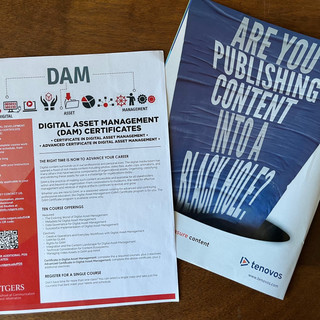Digital Asset Management in 2022
- ACE PR
- Sep 27, 2022
- 4 min read
Updated: Oct 5, 2022
It’s interesting to see how technology changes over the years, and yet sometimes so little changes. In the 1990s, brand asset owners were implementing digital asset management (DAM) systems to help content creators, production teams, and other stakeholders store and easily access their images, videos, documents, and other media. Fast forward 30 years and not much has changed — except, perhaps, the sheer number of assets, the channels of usage, and the value of metadata.
While some of the software companies from the 90s are still in the game and others have merged, one thing is clear: there's a growing demand for intelligent management systems. Plus, today's digital asset managers, aka metadata mavens, can upload their assets to any software system that better meets their requirements. This is why a DAM supplier simply must be one step ahead of their users, and they will never lose a customer.
A community gathering
Digital asset management may not be on everyone’s radar in the tech space, but it should be. At the recent DAM conference hosted by Henry Stewart in NYC, experts and end users shared how the mismanagement of digital assets can have untold effects on the bottom line, whereas a solid DAM system helps brand owners to leverage their assets, minimize expenses, and maximize the creative and production workflow. For every brand owner — no matter how big or small — a DAM system is a must. Now, the question is...
"Which DAM is best suited for an organization?"
What better place to find out than the 2022 DAM conference? It was the first gathering of the community since the 2020 pandemic, and the expo floor was filled to capacity with digital asset management solution providers.
Why so many DAM offerings?
Brands have numerous digital asset creators, multiplied exponentially by the number of users of these assets — and it works out to be a colossal amount of information that somehow needs to be managed. And since these brand assets are valuable, they should to be used and repurposed often.
Which explains why for each customer and end-user attending the DAM conference, there seemed to be two more consulting firms helping them to manage their constantly growing inventory.
Hearing from the experts
Speaking sessions at the DAM conference were packed as experts shared and learned from others about how they are managing their brand’s valuable assets: graphics, movies, audio — for advertisements, print, the web, and social media. The speakers addressed real-world examples, their trials and tribulations, and the keys to their success.
The takeaway is that DAM is an ongoing process that requires equal parts due diligence and communications to truly meet the requirements of its asset users.
The speaker list included DAM experts from Amway, Airbnb, Citi, McCormick & Company, Hilton, Metropolitan Museum of Art, Canadian Broadcasting Corporation, Showtime Networks, Clinique, Fred Rogers Productions, L’Oreal, Mars Inc., The Hershey Company, and others.
Kimberly Jauss of Saks, for example, talked about how a DAM allows retailers to drive digital innovation. Charles Duncan of Disney Parks Experiences and Products addressed how a DAM helps to make it the fastest creative supply chain on earth. Rachel Edwards of W.L. Gore & Associates (brand owners of Gore-Tex) discussed in a panel the future of DAM, especially for a company like hers that represents several brands.
The DAM suppliers that joined their customers in the speaking sessions or tech segments included Orange Logic, Bynder, World Vision, 4ALLPORTAL, Widen, Cloudinary, Sitecore, Wedia, and Tenovos, among others.
Stump the experts
The closing session, “Stump the experts,” drew some of the most challenging questions. The one inquiry that garnered the same answer from all three panelists was, “What is the next big thing in DAM that is overrated?”
The consensus from the panel was Artificial intelligence (AI).
You don’t have to be an expert to see that AI has not quite established itself just yet in the DAM space. AI’s application in digital asset management ranges from facial recognition to automatic tagging and metadata application."But when the APIs produce keywords that are as good as those entered by an experienced human, regardless of subject domain, then AI will have an impact on DAM," noted Martin Wilson of Bright Interactive, developers of the Asset Bank DAM solution. "This, however, is years away," he added.
A common thread throughout the sessions we attended at the DAM conference was the importance of team communications, which AI could never replace. Knowing what the asset users need and want today, and envisioning their future requirements, is the role of a company's Digital Asset Management Director, partnered with its DAM’s software development team.

The big thing in DAM that’s valued? Metadata. (Another a common theme throughout the conference.) Metadata is what truly rules the DAM workflow, and it also holds the information that brands require to switch systems if another outpaces theirs. DAM software suppliers know this, which is why they can’t rest on their laurels and are constantly innovating.
Educate. Educate Educate.
The best thing a DAM supplier (and all suppliers) should do is educate the market so that all parties understand the value of managing and using digital assets. Share customer workflow examples and new innovations. Give tips on commonly used and underutilized features, and share insight into what’s to come. Hold webinars at least quarterly to give your target audience the chance to speak one-on-one with an expert. In addition to the benefits to the attendees and interested parties, it also helps the experts to gain valuable market feedback.
###








































